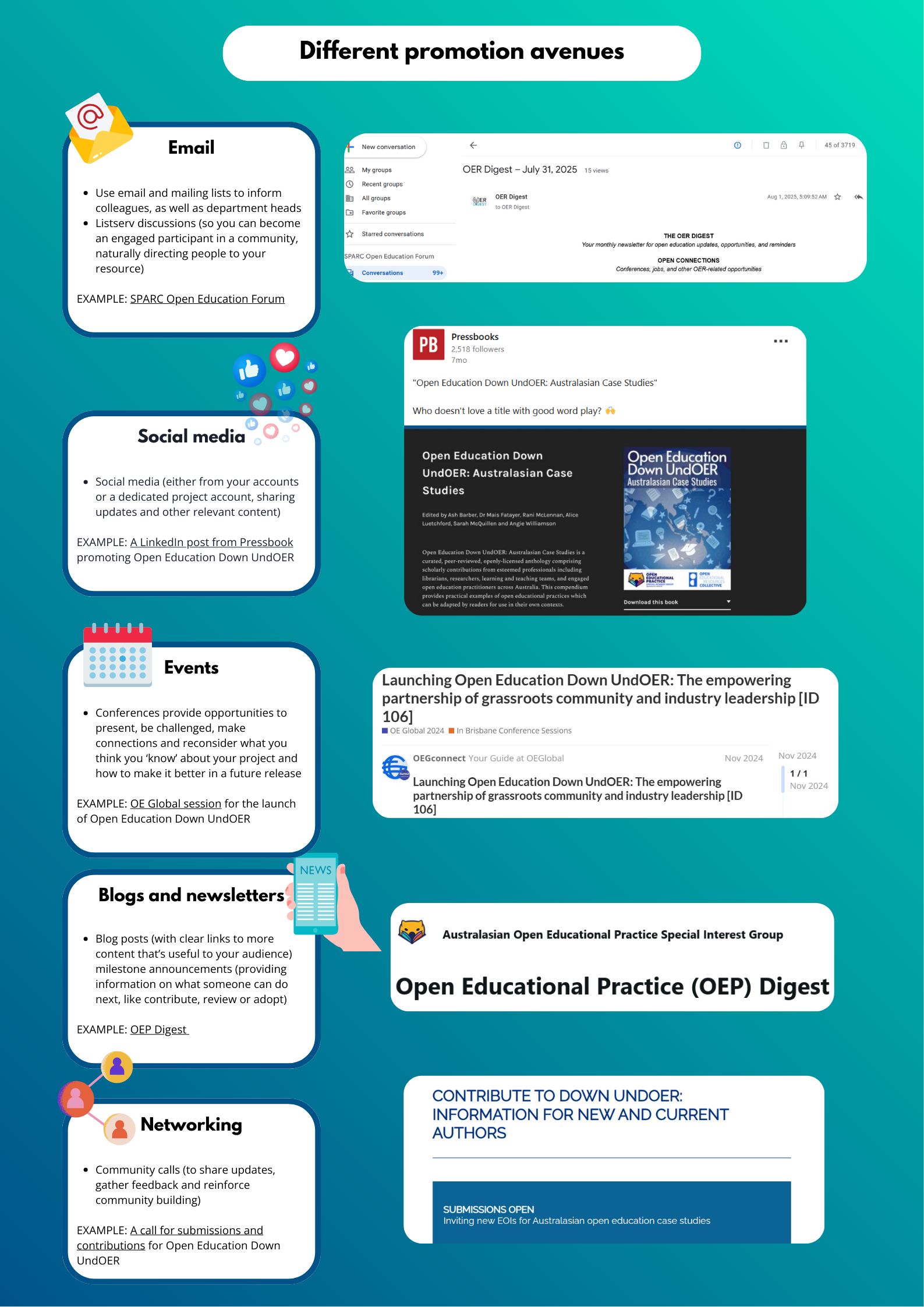
Now that you’ve published your OER, it’s time to let your audience know.
If you don’t have any experience with marketing or promotion, consulting with the marketing department at your university can help you get started. They can work with you to develop a general marketing plan for OER and assist with promoting specific releases through official university communication channels.
Remember that every OER project is different, so you’ll need to keep adjusting your marketing approach.
While anyone on your publishing team can market your OER, it’s a good idea to provide a clear promotional plan, along with resources to help them communicate with a consistent message. Some of the roles involved in marketing an OER are:
The story of your OER starts before it’s even written, with the reasons for creating it, the content it covers, your intended audience and your authoring and publishing teams.
Knowing as many details as possible about the author will help you understand the target audience. For example:
Some publishers develop a marketing questionnaire to send to authors at the beginning of the project, although some other tools you can use to help you determine the audience include:
Preparing for promotion
There are several tasks which can help prepare for OER promotion activities, these include:
Different promotion avenues
Once preparation tasks are complete, there are many avenues to share promotional materials. Explore some examples below:

Example: SPARC Open Education Forum
Social media
Example: A LinkedIn post from Pressbooks promoting Open Education Down UndOER
Events
Example: OE Global Conference session for the launch of Open Education Down UndOER
Blogs and newsletters
Example: Australasian OEP Digest
Networking
Example: A call for submissions and contributions for Open Education Down UndOER
Below are some places you can distribute an OER:
Many OER collections allow authors to submit requests for their OER to be included. Some repositories require that a new OER meet certain criteria, such as an evaluation by a subject matter expert. Below are some examples of where you can apply:
Wherever possible, it’s best to link back to the webbook in Pressbooks (or wherever you’re hosting your OER) to avoid having to update files and information in multiple locations.
Adapted from:
'Storytelling & Communications Summary’ and ‘Storytelling & Communications Overview’ in The Rebus Guide to Publishing Open Textbooks (So Far) by Apurva Ashok and Zoe Wake Hyde, licensed under a CC BY 4.0 licence.
'Marketing an Open Textbook’ in Open Textbook Publishing Orientation (PUB 101) by Open Education Network, licensed under a CC BY 4.0 licence, based on ‘Unit 6 Assessing Impact: Purposeful Marketing, Promotion, Publicity – Narrative’ in Library Publishing Curriculum, licensed under a CC BY 4.0 licence.
‘Where to Share’ in Authoring Open Textbooks by Melissa Falldin and Karen Lauritsen, licensed under a CC BY 4.0 licence.
'Communications’ in Self-Publishing Guide by Lauri M. Aesoph, licensed under a CC BY 4.0 licence.